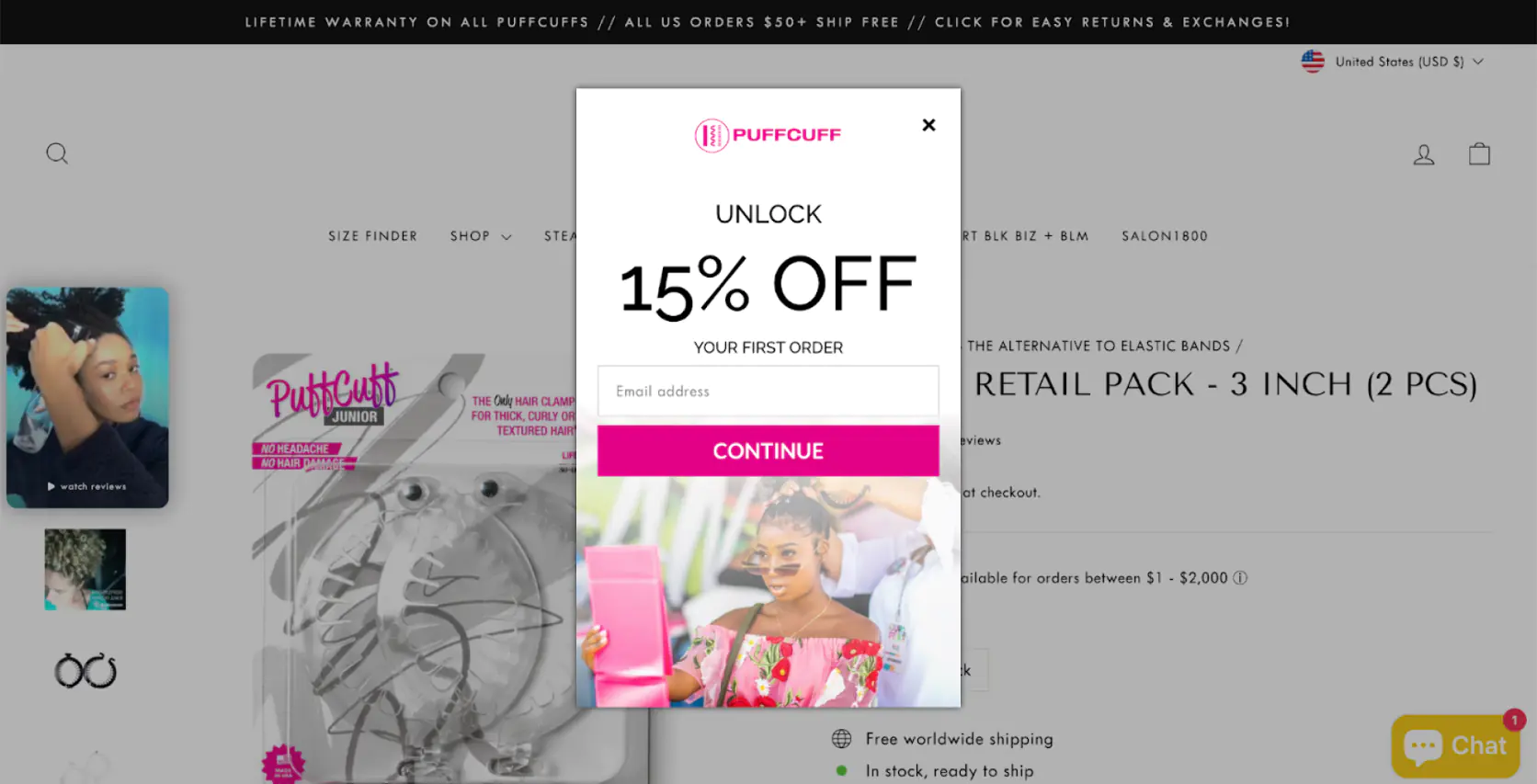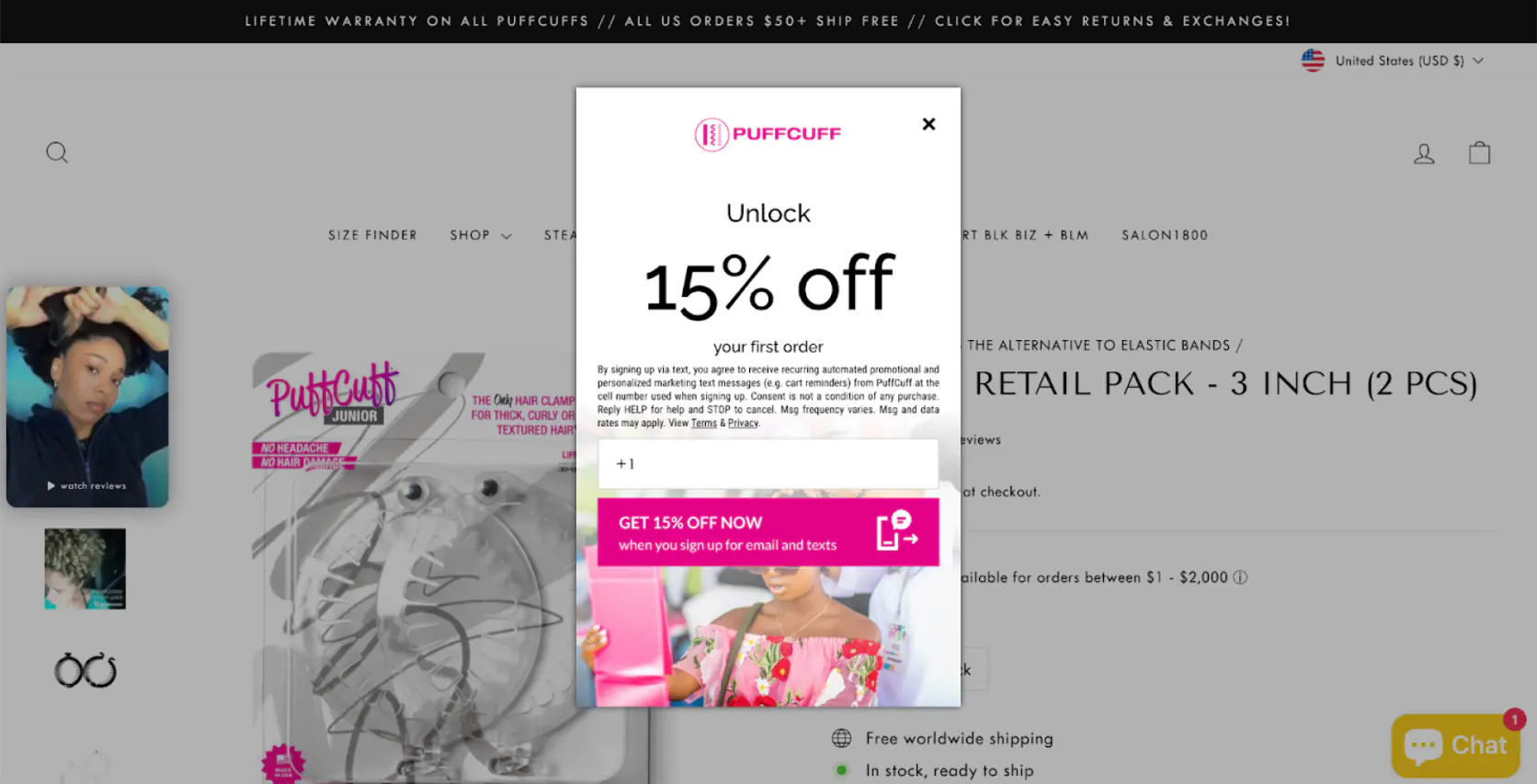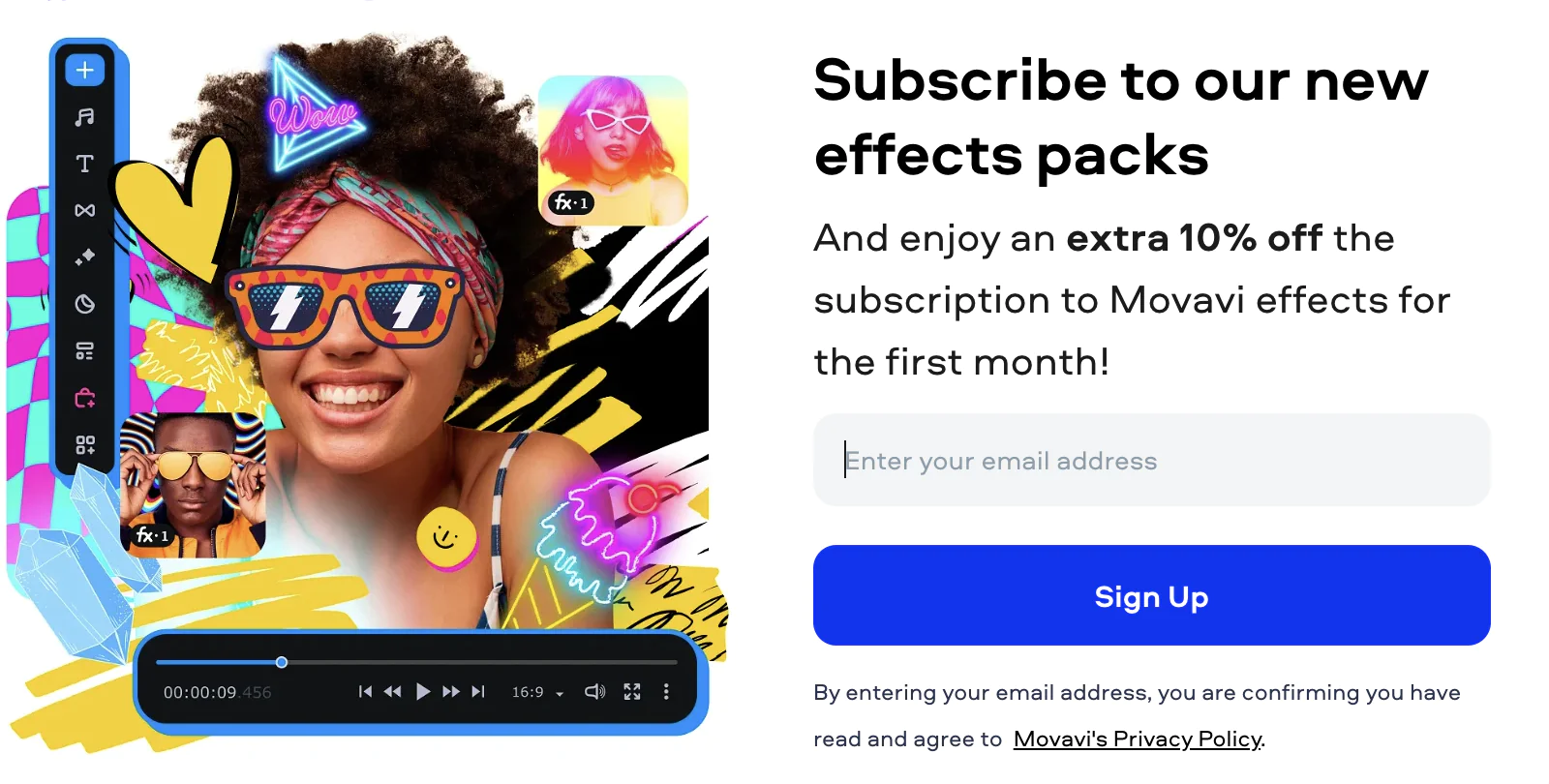Optimize your marketing with top-tier opt-in forms and email examples. Make compelling messages and build a stellar newsletter easily.
January 29, 2024
Opt-in Email Examples and Best Practices for Effective Marketing
Question
We’ve been growing our email list fast with a simple signup pop‑up, but now we’re seeing the downside: more invalid emails, softer engagement, and I’m starting to worry about deliverability and consent. I keep hearing “just do double opt‑in, ” but I’m afraid we’ll tank signups if we add extra steps.
If we want to do opt‑in the right way, what should the confirmation and welcome email actually say so it feels trustworthy and drives action?
Answer
To implement opt-in emails the right way, build a compliant, high-performing opt‑in system by getting explicit consent, keeping the first signup step simple, pairing it with a compelling incentive and clear CTA, then deliver the value through a segmented welcome sequence and run A/B testing of both the form and emails to steadily improve signups.
Let’s take a deeper dive into opt-in emails.
Envision John, a tech enthusiast, browsing a website about the latest gadgets. He’s impressed by the insightful content and notices an invitation to subscribe to their newsletter for weekly updates and expert reviews. He submits his email address and moments later, receives a confirmation email, asking him to verify his subscription. With a simple click on the confirmation link, John becomes part of an exclusive community of tech aficionados.
This is exactly what opt-in email marketing is all about, where a simple action — a confirmation click — sets the foundation for a meaningful and compliant relationship between a brand and its audience. For marketers at all levels, understanding and implementing this process is crucial.
In this article, we’ll explore the nuances of opt-in email marketing, diving into effective strategies and best practices with examples of opt-in email campaigns. You’ll learn how to craft compelling opt-in emails and confirmation messages that resonate with your audience, turning casual visitors like John into engaged subscribers.
What is Opt-In Email Marketing?
Opt-in email marketing is a strategy that respects the choices and preferences of the audience. With an opt-in strategy, brands obtain consent from individuals before sending them marketing emails. This ensures that the campaigns you send are to subscribers who have willingly provided their email addresses, indicating a genuine interest in your brand, products, or services.
There are two key types of opt-in email marketing — single and double.
Single Opt-In
In a single opt-in process, the journey from visitor to subscriber is a simple one-step action. Here, users provide their email addresses, and they are immediately added to your mailing list. This method is straightforward and user-friendly, leading to a quicker expansion of your email list. However, as it lacks an additional verification step, it bears the risk of accumulating unverified, invalid emails or those provided by users who may not be fully committed to engaging with your content.
Double Opt-In
Double opt-in takes it a step further by integrating a verification process. After a user provides their email address, they receive a follow-up email asking them to confirm their subscription. The additional layer of confirmation provided by double opt-in not only helps in maintaining a cleaner email list with fewer bounce rates but also enhances the quality of your list, ensuring a more responsive and committed audience.
Understanding Opt-Out Emails
Opt-out email marketing is essentially the reverse process. In this approach, individuals are automatically added to a mailing list and each recipient must take action to unsubscribe (i.e., opt-out) if they do not wish to receive further emails. While this method can quickly build a large mailing list, it often suffers from lower engagement and can negatively impact brand perception. One key reason for this is the lack of initial consent. Recipients who have not actively chosen to subscribe may view the emails as unsolicited, which can lead to annoyance, eroded trust, and potentially damage the brand’s reputation over time.
To mitigate these challenges, opt-out strategies must prioritize transparency and ease of unsubscription. The process of opting out must be as visible and straightforward as the opt-in process.
Why are Opt-In Emails Important?
Let’s dive into the key benefits that highlight the importance of opt-in emails.
Higher Conversion Rates and Return on Investment
Subscribers who opt in have already shown preliminary interest in your brand, making them more likely to respond to your calls-to-action. Whether it’s encouraging a sale, promoting an event, or sharing exclusive content, your messages are landing in the inboxes of an audience primed for engagement, leading to higher conversion rates and a more substantial return on your email marketing investment.
Compliance with Regulations
Opt-in email marketing aligns with various privacy and anti-spam laws, such as the CAN-SPAM Act in the U.S. and GDPR in Europe. These regulations require explicit consent from individuals before they can be sent marketing emails. By adhering to these laws, you not only avoid hefty fines but also demonstrate a commitment to ethical marketing practices.
Improved Email Deliverability
Opt-in emails significantly enhance your email deliverability — when subscribers willingly sign up to receive your communications, it establishes a relationship of trust, reducing the likelihood of your emails being marked as spam (extending beyond legal compliance outlined above). This helps you maintain a positive sender reputation, boosting the chances of your emails reaching inboxes and ensuring your messages are consistently seen and engaged with.
Enhanced Engagement and Brand Loyalty
When subscribers choose to join your email list, it indicates an existing interest in your brand. By consistently delivering value through your emails, whether in the form of informative content or exclusive deals, you deepen the trust and connection with your subscribers. This ongoing engagement nurtures stronger relationships, increasing engagement, customer lifetime value and turning subscribers into brand advocates.
Improved Segmentation and Personalization
Finally, the value of opt-in email marketing extends beyond the mere collection of email addresses — it opens avenues for more detailed audience insights and customized content.
The opt-in process itself, when coupled with a well-designed sign-up form, can be a rich source of subscriber data. When subscribers choose to join your mailing list, they often provide insights into their preferences and behaviors (the breadth of these insights will depend on how detailed your sign up form is — more on this in the best practices section). This data enables you to segment your audience and create more personalized, targeted email campaigns. Tailored content that aligns with specific subscriber interests or demographics not only resonates more deeply but also drives higher engagement and revenue.
Five Opt-In Email Marketing Best Practices
1. Refine Your Opt-In Form
Your opt-in form should balance between ease of use and collecting actionable data — this is critical to building an email list that is not only large but also segmented and engaged. Here’s how to optimize your opt-in forms effectively:
Simplify the Subscriber’s First Step
Begin by streamlining the subscriber’s initial interaction with your opt-in form. The primary aim at this stage is to facilitate a smooth and quick subscription process. Request only the most essential information — the email address — to encourage higher sign-up rates. For example, PuffCuff effectively employs this tactic by offering a discount to users who provide their email address through a simple, single-field pop-up form. This approach encourages participation by minimizing the effort required from the user.

In the first pop-up window, PuffCuff’s customers are asked to enter their email address
Collect More Information with a Multi-Step Form
Once the initial contact information has been secured, you can also utilize an additional step to gather more detailed data. PuffCuff’s strategy illustrates this by asking the customer for their phone number in a follow-up step:

In the second pop-up window, customers are asked for their cell phone number
Alternatively, a subsequent form might ask subscribers to indicate their preferences regarding the content they wish to receive. This could be in the form of checkboxes for different areas of interest or product categories.
Implementing a two-step opt-in process allows for a deeper understanding of your audience without demanding too much upfront. It respects the user’s initial time investment while setting the foundation for a more tailored and engaging communication strategy. The additional information gathered during this stage can be invaluable for segmenting your email list, personalizing future communications, and ultimately giving your audience more control over the campaigns they receive, fostering a positive experience.
2. Offer Valuable Incentives
Provide leads with an incentive that captures attention and interest. This should be a valuable offering that aligns with your audience’s needs — whether it’s a discount, a free trial, or exclusive content, it should be something that provides immediate value to the subscriber. The key is to make this offer so compelling that the audience feels they are gaining something significant enough to exchange their contact details for.
Movavi’s video editing platform enhances customer engagement by offering a tailored incentive: a 10% discount on their Movavi effects subscription for the first month. This offer is strategically presented through a pop-up to visitors who have spent some time browsing through a range of video editing features on Movavi Effect Store’s website, such as effects, stickers, and transitions. The timing of the pop-up ensures that the discount is offered to potential customers who are already considering a purchase, and will find this offer valuable, increasing the likelihood of conversion.

This example of a pop-up from Movavi offers to send customers a selection of the most popular effects in exchange for opting in with their email address
3. Include a Compelling Call-To-Action
Once you have piqued interest with an attractive incentive, the Call-To-Action (CTA) should act as a clear pathway for the audience to claim their reward.
The CTA must be direct and action-oriented, providing the audience with a simple and straightforward step to access the promised incentive — for instance, "Join Now," "Start Saving," or "Download Your Free Guide." It should be placed prominently and designed in a way that stands out, yet seamlessly integrates with the overall offering.
4. Develop an Effective Welcome Sequence
A well-crafted welcome email sequence is an essential part of nurturing a new subscriber. It’s the initial series of communications that confirms the subscription, provides the incentive, and introduces the subscriber to the brand. Here is a strategy for developing a welcome email sequence that will effectively engage and retain your new audience.
Sending the Initial Welcome Email
Immediately after a new subscription is confirmed, dispatch the welcome email — this can be automated via an opt-in email marketing service such as Maestra. This initial communication should be friendly and appreciative, thanking the subscriber for their interest. It should also confirm the successful opt-in and, if applicable, provide the promised incentive, such as a coupon code or a link to exclusive content. This delivery of value reinforces the subscriber’s decision and begins the relationship on a positive note.
Here is a good example of a welcome email from Pinemelon:

The email contains the subscriber’s personalized discount code (i.e., the incentive for the subscription), while also introducing the brand’s values and showcasing recommended products
Building the Relationship Through Informative Content
The subsequent emails in the welcome sequence should serve to educate the subscriber about your brand and offerings. This could include detailed product information, user guides, or customer testimonials that illustrate the value and quality of your brand.
Use the data from the sign-up process to segment your welcome emails, ensuring each subscriber receives content that is most relevant to their interests. A personalized approach demonstrates that you value their preferences and are committed to providing a tailored experience.
For instance, expanding on Pinemelon’s example in the previous section, the brand sends slightly different campaigns to subscribers based on whether they have made their first purchase:

This campaign in the welcome sequence is sent to customers who have not yet made a purchase
For individuals who have yet to make a purchase, Pinemelon enhances the campaign with a greater discount to encourage first-time orders and elaborates on the benefits of selecting Pinemelon for their grocery shopping.
If the follow-up content strategy is not carefully thought out, it can have adverse effects. Sending too many emails or content that fails to add real value can overwhelm or disinterest subscribers. This can lead to a higher rate of unsubscribes, as recipients may feel bombarded or find the content irrelevant. It’s crucial to strike the right balance in both the frequency and quality of your communications to ensure your emails continue to be a welcomed presence in your subscribers’ inboxes.
5. Use A/B Tests to Enhance Your Strategy
A/B testing, also known as split testing, allows you to compare two versions of your opt-in forms or email campaigns to pinpoint what resonates best with your audience.
Testing Opt-in Form Variables
When it comes to your opt-in forms, small changes can have a significant impact. Test different elements, such as:
- Copy. Experiment with the tone of the language used in your form. For instance, you might test a friendly, informal tone against a more professional, formal approach to see which better resonates with your visitors. You could also test copy length to determine whether your audience responds better to something short and sweet, or if they prefer a longer text that tells a story.
- Incentive options. Explore different types of incentives to find out what motivates your audience most effectively. Do they prefer a percentage-based discount, a specific dollar amount off, or a unique non-monetary offer, such as a complimentary guide or exclusive content? For instance, in an A/B test, fashion retailer 12 STOREEZ discovered that their audience preferred an opt-in pop-up offering accessing to a specially curated playlist, demonstrating that sometimes unconventional incentives can be highly effective.
- Design. Assess the impact of visual design elements on form submissions. Does a bright, attention-grabbing button color lead to more conversions? Or perhaps a more subdued, elegant design aligns better with your brand and audience preferences. The color, shape, and size of buttons and form fields can all influence the likelihood of a visitor completing the opt-in process.
- Timing. Determine the most effective timing for your opt-in form to appear — i.e., should it pop up immediately, giving users an instant opportunity to subscribe, or is it better to wait until they’ve shown engagement with your content (and if so, how long)? You might also consider the efficacy of exit-intent, which displays the opt-in form as the user is about to navigate away from the page, capturing those last-moment sign-ups.
- Placement. The physical placement of your opt-in form on the website can greatly affect its visibility and user interaction. Test whether your form garners more subscriptions at the top of the page versus the bottom, or if other placements — such as a sticky header, a sidebar, or even an inline form within the content — perform better.
Experimenting with Email Campaign Elements
Similarly, for opt-in email confirmations and welcome campaigns, A/B testing should be conducted on various components. This could include the subject line, the layout of the content, the images used, and the wording of your CTAs. Perhaps a personalized subject line results in higher open rates, or maybe a CTA at the middle of the email performs better than one at the end. Regular testing and analysis allow you to continuously improve the effectiveness of your campaigns.
Final Thoughts
The success of opt-in marketing depends on much more than just growing a list of email addresses. From crafting your messaging tone to strategically timing opt-in prompts and understanding the importance of implementing practices like double opt-in — which ensures a higher level of subscriber engagement and authenticity — every detail significantly contributes to how your audience perceives and engages with your campaigns. Moreover, the introduction to your email series, particularly a thoughtfully crafted welcome email, sets the tone for ongoing communication. Through A/B testing, you can refine these details, gaining a nuanced understanding of what motivates your audience to engage, subscribe, and ultimately convert.
At its heart, opt-in email marketing is about building a community — a network of subscribers who are not just interested in your offerings but are also eager to engage with your brand. This community isn’t just a list — it’s a group of individuals who provide valuable feedback, contribute to your brand’s growth, and enhance the overall customer experience. By encouraging subscribers to opt-in, you lay the foundation for a relationship based on genuine interest and engagement, crucial for long-term success and mutual benefit.


